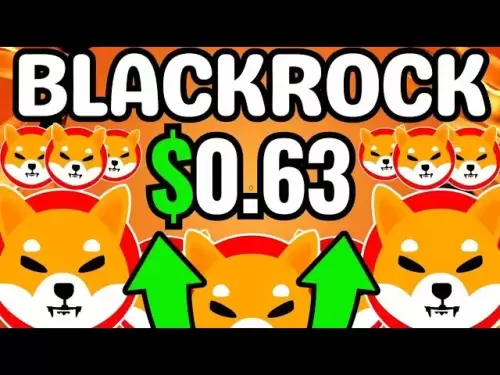-
 Bitcoin
Bitcoin $117900
-0.22% -
 Ethereum
Ethereum $3620
1.45% -
 XRP
XRP $3.392
-1.67% -
 Tether USDt
Tether USDt $1.001
-0.01% -
 BNB
BNB $741.5
1.66% -
 Solana
Solana $177.7
0.35% -
 USDC
USDC $0.9999
0.00% -
 Dogecoin
Dogecoin $0.2524
4.26% -
 TRON
TRON $0.3190
-1.74% -
 Cardano
Cardano $0.8331
1.49% -
 Hyperliquid
Hyperliquid $44.73
-0.94% -
 Stellar
Stellar $0.4609
-0.52% -
 Sui
Sui $3.844
2.54% -
 Chainlink
Chainlink $18.54
2.73% -
 Hedera
Hedera $0.2685
2.60% -
 Bitcoin Cash
Bitcoin Cash $522.6
1.91% -
 Avalanche
Avalanche $24.57
4.49% -
 Shiba Inu
Shiba Inu $0.00001508
2.57% -
 Litecoin
Litecoin $111.2
9.56% -
 UNUS SED LEO
UNUS SED LEO $8.989
0.15% -
 Toncoin
Toncoin $3.185
-0.08% -
 Polkadot
Polkadot $4.391
3.82% -
 Uniswap
Uniswap $10.34
3.56% -
 Monero
Monero $327.3
1.09% -
 Ethena USDe
Ethena USDe $1.001
-0.02% -
 Bitget Token
Bitget Token $4.953
1.19% -
 Pepe
Pepe $0.00001351
2.67% -
 Dai
Dai $1.000
0.01% -
 Aave
Aave $320.9
0.41% -
 Bittensor
Bittensor $415.9
1.00%
How to use KDJ in a rebound market? How to predict the rebound height?
Use KDJ in rebound markets by identifying oversold conditions and waiting for K line to cross above D line; predict height with Fibonacci levels and volume analysis.
May 22, 2025 at 07:14 pm
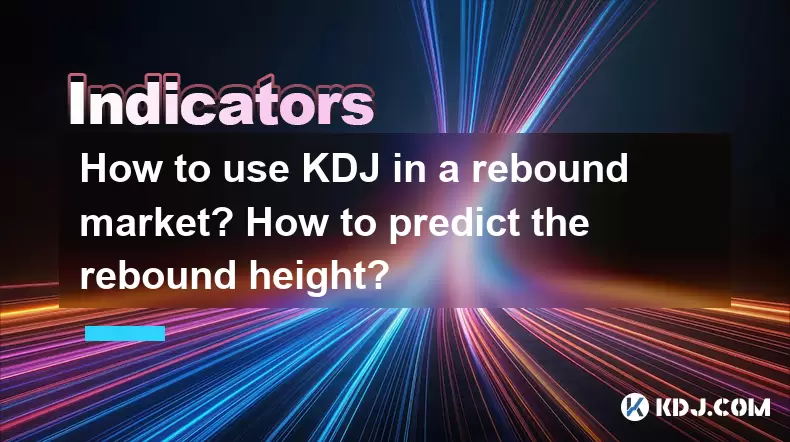
How to Use KDJ in a Rebound Market? How to Predict the Rebound Height?
The KDJ indicator, also known as the Stochastic Oscillator, is a popular technical analysis tool used by traders to identify potential reversals in the market. In a rebound market, understanding how to effectively use the KDJ indicator can be crucial for making informed trading decisions. This article will explore the use of the KDJ indicator in a rebound market and provide insights on predicting the rebound height.
Understanding the KDJ Indicator
The KDJ indicator consists of three lines: the K line, the D line, and the J line. The K and D lines are calculated based on the highest high and lowest low of a given period, while the J line is a more sensitive version of the K line. The KDJ indicator oscillates between 0 and 100, with readings above 80 indicating an overbought condition and readings below 20 indicating an oversold condition.
To use the KDJ indicator effectively, traders should pay attention to the following key signals:
- Crossing of the K and D lines: When the K line crosses above the D line, it is considered a bullish signal. Conversely, when the K line crosses below the D line, it is considered a bearish signal.
- Overbought and oversold conditions: When the KDJ indicator reaches the overbought zone (above 80), it may indicate a potential reversal to the downside. Similarly, when the indicator reaches the oversold zone (below 20), it may indicate a potential reversal to the upside.
- Divergence: If the price of an asset is making new lows while the KDJ indicator is making higher lows, it may indicate a potential bullish reversal. Conversely, if the price is making new highs while the KDJ indicator is making lower highs, it may indicate a potential bearish reversal.
Using KDJ in a Rebound Market
In a rebound market, where prices are recovering from a previous decline, the KDJ indicator can be particularly useful for identifying potential entry points. Here's how to use the KDJ indicator in a rebound market:
Identify the oversold condition: Look for the KDJ indicator to enter the oversold zone (below 20). This suggests that the market may be due for a rebound.
Wait for the K line to cross above the D line: Once the KDJ indicator is in the oversold zone, wait for the K line to cross above the D line. This crossing is a bullish signal and may indicate the start of a rebound.
Confirm with other indicators: To increase the reliability of the signal, consider using other technical indicators such as the Relative Strength Index (RSI) or Moving Averages to confirm the potential rebound.
Set entry and exit points: Based on the KDJ signal, set your entry point slightly above the recent low and your exit point at a predetermined level based on your risk-reward ratio.
Predicting the Rebound Height
Predicting the exact height of a rebound can be challenging, but there are several methods traders can use to make educated guesses. Here are some techniques to help predict the rebound height:
Fibonacci retracement levels: Use Fibonacci retracement levels to identify potential resistance levels where the rebound may stall. Common Fibonacci retracement levels include 38.2%, 50%, and 61.8%.
Previous resistance levels: Look at historical price data to identify previous resistance levels. These levels may act as barriers to the rebound.
Volume analysis: Monitor trading volume during the rebound. A significant increase in volume may indicate strong buying interest and suggest a higher rebound.
Moving averages: Use moving averages to identify potential resistance levels. For example, if the price is approaching a long-term moving average, it may act as a ceiling for the rebound.
Practical Example of Using KDJ in a Rebound Market
Let's walk through a practical example of using the KDJ indicator in a rebound market:
Step 1: Identify the oversold condition
- Open your trading platform and apply the KDJ indicator to the chart.
- Look for the KDJ indicator to enter the oversold zone (below 20).
Step 2: Wait for the K line to cross above the D line
- Once the KDJ indicator is in the oversold zone, monitor the K and D lines.
- Wait for the K line to cross above the D line, which indicates a potential bullish signal.
Step 3: Confirm with other indicators
- Use the RSI to confirm the oversold condition. If the RSI is also in the oversold zone (below 30), it strengthens the bullish signal.
- Check if the price is approaching a support level or a moving average that could act as a bounce point.
Step 4: Set entry and exit points
- Set your entry point slightly above the recent low to account for potential false signals.
- Determine your exit point based on your risk-reward ratio. For example, if you are targeting a 2:1 risk-reward ratio, set your exit point at a level that is twice the distance from your entry point to your stop-loss level.
Step 5: Monitor the rebound
- After entering the trade, monitor the KDJ indicator and other technical indicators to gauge the strength of the rebound.
- Use Fibonacci retracement levels and previous resistance levels to identify potential exit points.
Combining KDJ with Other Indicators
To increase the accuracy of your trading signals, consider combining the KDJ indicator with other technical indicators. Here are some effective combinations:
KDJ and RSI: The RSI can help confirm overbought and oversold conditions identified by the KDJ indicator. If both indicators are in the oversold zone, it strengthens the bullish signal.
KDJ and Moving Averages: Moving averages can help identify the overall trend. If the KDJ indicator signals a rebound and the price is above a key moving average, it suggests a higher probability of a successful rebound.
KDJ and Volume: Monitoring volume can provide insights into the strength of the rebound. If the KDJ indicator signals a rebound and volume is increasing, it suggests strong buying interest and a higher likelihood of a sustained rebound.
FAQs
1. Can the KDJ indicator be used in other market conditions besides a rebound market?
Yes, the KDJ indicator can be used in various market conditions, including trending markets and ranging markets. In a trending market, the KDJ indicator can help identify potential pullbacks for entry points, while in a ranging market, it can help identify overbought and oversold conditions for potential reversals.
2. How often should I check the KDJ indicator for trading signals?
The frequency of checking the KDJ indicator depends on your trading style. For day traders, checking the indicator every few minutes to an hour may be necessary. For swing traders, checking the indicator once or twice a day may be sufficient. It's important to find a balance that suits your trading strategy and time frame.
3. Are there any limitations to using the KDJ indicator in a rebound market?
Yes, there are limitations to using the KDJ indicator in a rebound market. One limitation is that the indicator can generate false signals, especially in highly volatile markets. Additionally, the KDJ indicator is a lagging indicator, meaning it may not always predict the exact timing of a rebound. To mitigate these limitations, it's essential to use the KDJ indicator in conjunction with other technical indicators and fundamental analysis.
4. Can the KDJ indicator be used for cryptocurrencies other than Bitcoin?
Yes, the KDJ indicator can be used for various cryptocurrencies, not just Bitcoin. The principles of using the KDJ indicator remain the same across different cryptocurrencies. However, it's important to consider the specific characteristics and volatility of each cryptocurrency when applying the indicator.
Disclaimer:info@kdj.com
The information provided is not trading advice. kdj.com does not assume any responsibility for any investments made based on the information provided in this article. Cryptocurrencies are highly volatile and it is highly recommended that you invest with caution after thorough research!
If you believe that the content used on this website infringes your copyright, please contact us immediately (info@kdj.com) and we will delete it promptly.
- Crypto, Altcoins, and Genius Clarity: Decoding the 2025 Bull Run
- 2025-07-20 10:50:12
- DOGE's Double Bottom: Is a $0.42 Target Really in Sight?
- 2025-07-20 10:30:12
- Cryptos Surge: Decoding Market Gains & Top Performing Assets
- 2025-07-20 10:30:12
- Shiba Inu, Market Cap, and Troller Cat: A Meme Coin Mashup for the Ages
- 2025-07-20 10:50:12
- Bitcoin Wallets, Profitability, and BTC Price: What's the Hype?
- 2025-07-20 10:55:12
- Troller Cat's Stage 14: Balloon Boy Hoax, Contributions Soar!
- 2025-07-20 10:55:12
Related knowledge
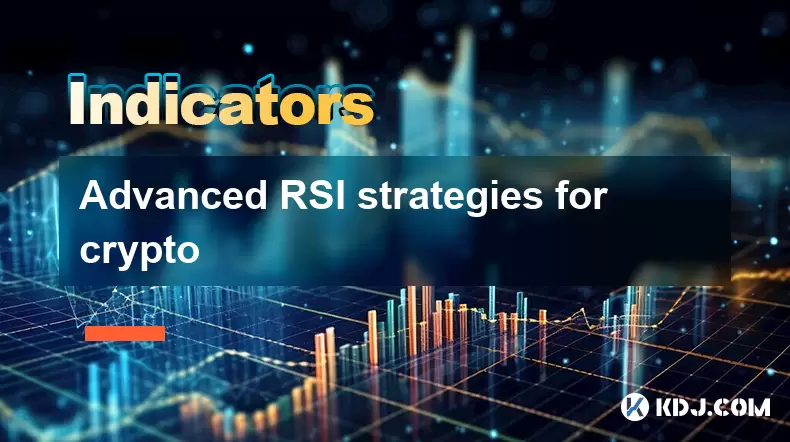
Advanced RSI strategies for crypto
Jul 13,2025 at 11:01am
Understanding the Basics of RSI in Cryptocurrency TradingThe Relative Strength Index (RSI) is a momentum oscillator used to measure the speed and chan...
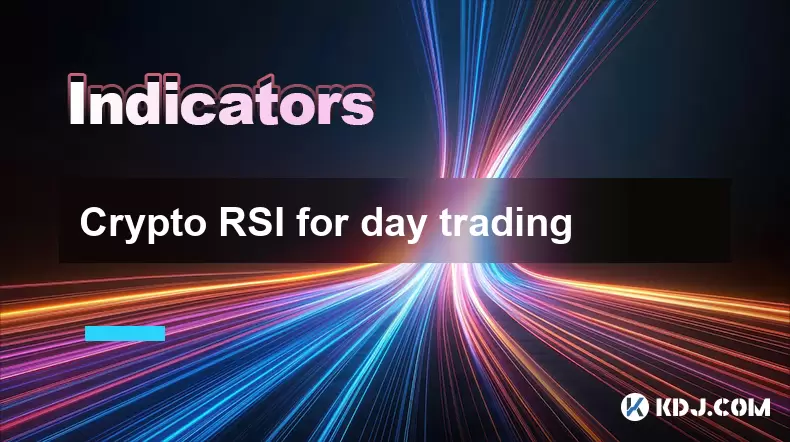
Crypto RSI for day trading
Jul 12,2025 at 11:14am
Understanding RSI in the Context of Cryptocurrency TradingThe Relative Strength Index (RSI) is a momentum oscillator used to measure the speed and cha...
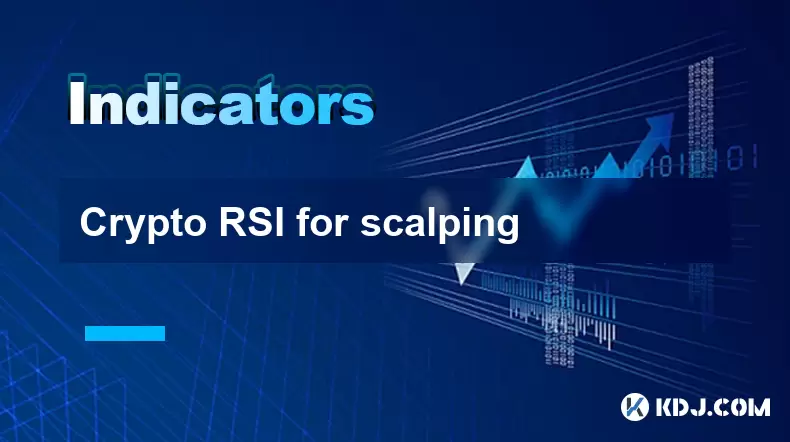
Crypto RSI for scalping
Jul 12,2025 at 11:00pm
Understanding RSI in the Context of Crypto TradingThe Relative Strength Index (RSI) is a momentum oscillator widely used by traders to measure the spe...
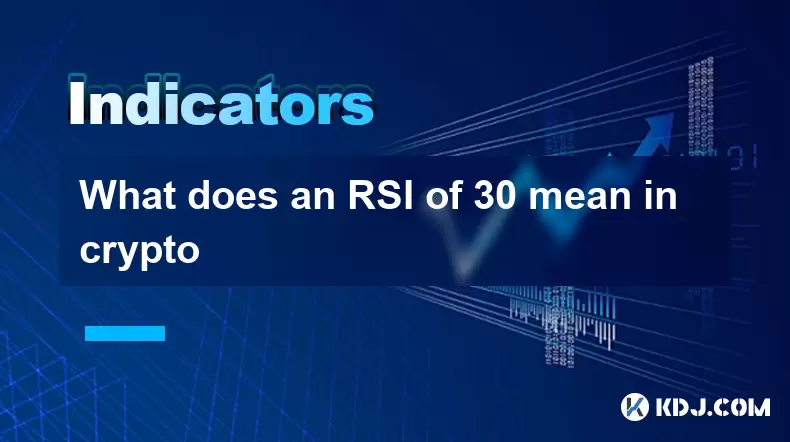
What does an RSI of 30 mean in crypto
Jul 15,2025 at 07:07pm
Understanding RSI in Cryptocurrency TradingRelative Strength Index (RSI) is a momentum oscillator widely used in cryptocurrency trading to measure the...
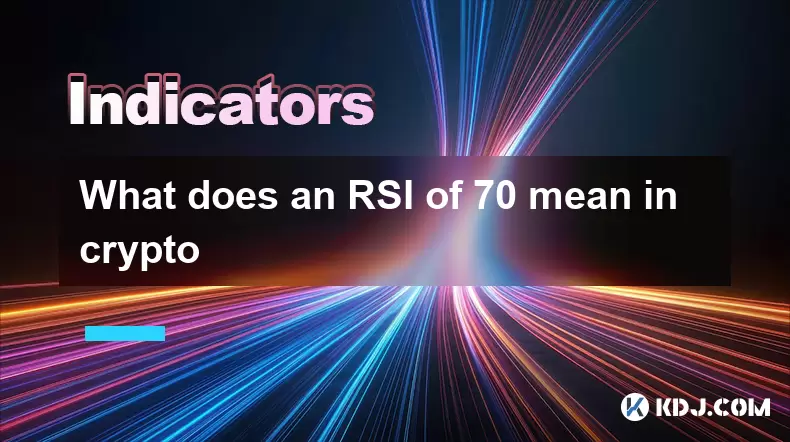
What does an RSI of 70 mean in crypto
Jul 13,2025 at 06:07pm
Understanding the RSI Indicator in Cryptocurrency TradingThe Relative Strength Index (RSI) is a widely used technical analysis tool that helps traders...
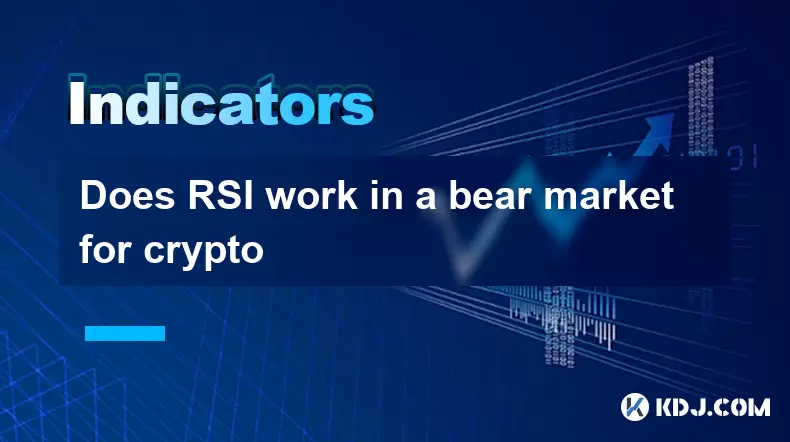
Does RSI work in a bear market for crypto
Jul 16,2025 at 01:36pm
Understanding RSI in Cryptocurrency TradingThe Relative Strength Index (RSI) is a momentum oscillator used by traders to measure the speed and change ...

Advanced RSI strategies for crypto
Jul 13,2025 at 11:01am
Understanding the Basics of RSI in Cryptocurrency TradingThe Relative Strength Index (RSI) is a momentum oscillator used to measure the speed and chan...

Crypto RSI for day trading
Jul 12,2025 at 11:14am
Understanding RSI in the Context of Cryptocurrency TradingThe Relative Strength Index (RSI) is a momentum oscillator used to measure the speed and cha...

Crypto RSI for scalping
Jul 12,2025 at 11:00pm
Understanding RSI in the Context of Crypto TradingThe Relative Strength Index (RSI) is a momentum oscillator widely used by traders to measure the spe...

What does an RSI of 30 mean in crypto
Jul 15,2025 at 07:07pm
Understanding RSI in Cryptocurrency TradingRelative Strength Index (RSI) is a momentum oscillator widely used in cryptocurrency trading to measure the...

What does an RSI of 70 mean in crypto
Jul 13,2025 at 06:07pm
Understanding the RSI Indicator in Cryptocurrency TradingThe Relative Strength Index (RSI) is a widely used technical analysis tool that helps traders...

Does RSI work in a bear market for crypto
Jul 16,2025 at 01:36pm
Understanding RSI in Cryptocurrency TradingThe Relative Strength Index (RSI) is a momentum oscillator used by traders to measure the speed and change ...
See all articles

























